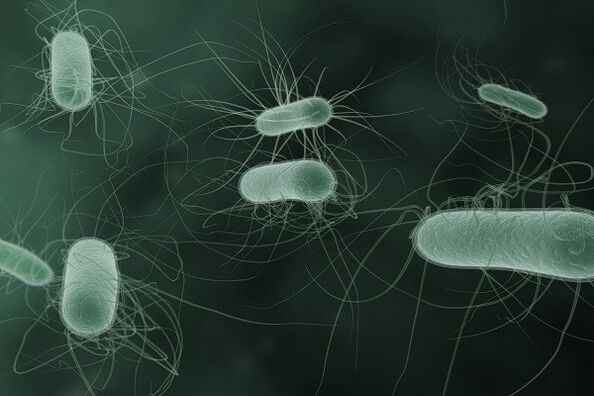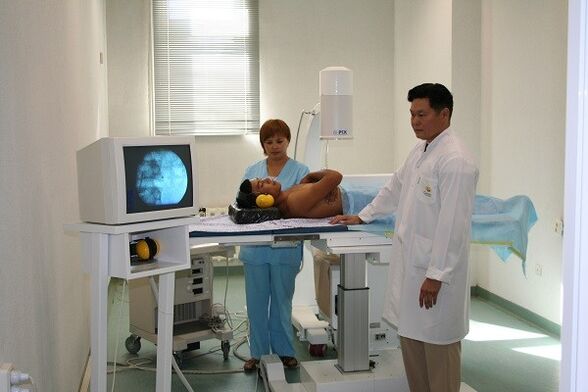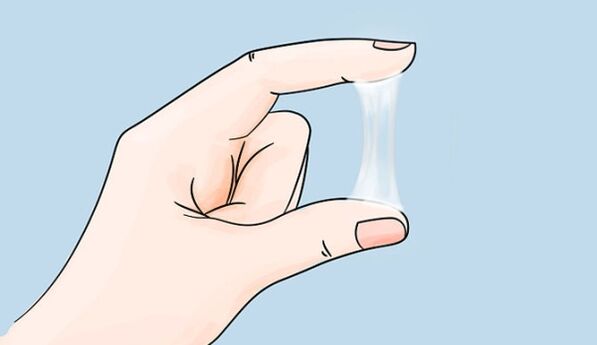The discharge in men is a mucous fluid that forms in the foreskin from the urethra. Often such a physiological phenomenon becomes a reason for serious experiences, but not all discharges are related to the inflammatory process in the body. Some of them appear as a result of natural processes, which indicates a normal state of health.
Physiological
Natural causes of urethral discharge in men:
- Traces of urine. Mainly light yellow, sometimes saturated. Discharge without odor and without cheese formations;
- The secret of the prostate gland. It smells like semen. It is characterized by a mucous consistency of a light white tone;
- Ejaculate. This fluid is formed as a result of the mixing of spermine with the secretions of the glands of the genitourinary system, namely:
- urethral;
- prostatic;
- bulbourethral.
As a result, viscous mucus of a grayish tinge is released;
- Smegma. It is visually determined by its rich white color, however in certain cases the liquid has yellow or light green impurities.
Smegma assignment is carried out systematically. It is a type of fat that consists of fatty and bacterial residues. Located in the foreskin and in the coronal sulcus. The main function of this lubricant is to reduce the friction between the foreskin and the head. The abundance of these secretions is mainly due to the age of puberty. In the future, the activity of the preputial glands loses its intensity and stops completely in adulthood.
It is important to understand that adherence to personal hygiene rules is a must, as smegma tends to accumulate on the surface of the head under the foreskin. If it is not washed in time, the oxidation of fats and the decomposition of the protein part will begin. This leads to an unpleasant odor and decomposition. Visually resembles cottage cheese.
Perhaps the development of phimosis, a disease in which it is not possible to completely separate the head from the foreskin. Without timely treatment, this can lead to chronic inflammatory processes and the development of oncological diseases of the genital organ.
In addition to the above, physiological male secretions can also include:
- urethrorrhea;
- prostatorrhea;
- issue.

Prostatorrhea: mucus with grayish impurities. It contains a negligible amount of sperm. Formed from the prostate gland. Depending on its transparency, the state of the prostate is determined. Due to the negligible volume, these secretions are practically invisible. As a general rule, they are formed as a result of muscle tension associated with urination or constipation. A high level of this fluid is one of the symptoms of prostatitis, which requires immediate treatment.
Contamination is arbitrary ejaculation that has nothing to do with intercourse. The reasons for this phenomenon are excess testosterone content. A man's age and the frequency of sexual intercourse are also not the least important. In men, the discharge can occur during periods of withdrawal; this is broadcast. It can happen during sleep. At the same time, in the morning, you can find white spots on your panties.
Pathological discharge in men.
Discharge from the urethra of a pathological nature is mainly associated with:
- possible sexually transmitted diseases;
- malignant formations;
- mechanical injuries of various kinds (previous operations, other therapeutic interventions, injuries);
- Inflammatory processes in the organs of the genitourinary system.
The most common criteria that determine the pathological nature of the discharge:
- Moderate to excessively large volume;
- Mostly cloudy with a mixture of yellow or green;
- They usually contain clumps of mucus, pus, or blood;
- Dense and sticky or, on the contrary, too liquid, watery;
- They have pungent fermented milk or a fishy smell;
- The discharge appears after urination, sexual arousal or after drinking alcohol;
- Tied at a specific time of day. They can be both unique and periodic).
It is important to understand that it is impossible to independently determine the diagnosis by the nature of the discharge. This requires a proper professional examination. The nature of the secreted fluid largely depends on the immune system and directly on the nature of the causative agent of the disease. Also, the form of the inflammatory process (acute or chronic) plays a special role.
Discharge with an unpleasant smell in sexually transmitted diseases is usually divided into:
- Mucous discharge. Indicate the presence of chlamydia or urethritis (mycoplasma or ureaplasma). They are characterized by a low volume of secreted fluid. There are colorless ones with a viscous consistency. By microscopic diagnostics, leukocytes are detected (the norm is 4 cells);
- Mucous - purulent. These secretions also indicate chlamydia, as well as ureaplasmosis and mycoplasmosis. With chlamydia, they are localized in the form of a kind of adhesion on the head of the penis of a light white shade, a transparent discharge from the urethra is possible in men;
- Purulent. Male discharge is greenish or yellow. They are characteristic of gonorrhea. They have a pungent smell of rot. Microscopic examination shows that the fluid contains epithelial cells secreted from the urethra. In addition, there is a significantly higher level of leukocytes. Concomitant symptoms are severe cramps and burning during intercourse and urination (mainly in the morning). Itching is also possible.
Inflammatory processes of a non-venereal nature.
The causes of inflammation of the organs of the genitourinary system in the vast majority of cases lie in their own conditionally pathogenic microflora. These are microorganisms whose activity is activated as a result of the weakening of the body's protective properties as a result of recent illnesses or in the context of intense psycho-emotional stress. These microorganisms include:
- Candida fungi;
- streptococci and staphylococci;
- Escherichia coli.

They live on the mucous membranes and on the surface of the skin. Their active reproduction is impeded by the immune system. Factors that weaken it, leading to an uncontrolled population of harmful microorganisms, in addition to those listed above, include:
- hypothermia;
- negative effects of chemotherapy;
- radiation exposure (radiation sickness);
- a prolonged course of taking broad-spectrum antibiotics.
The uncontrolled reproduction of conditionally pathogenic microflora can provoke the development of diseases such as:
- Candidiasis or thrush. Infectious disease of the urethra caused by the Candida fungus. For this ailment, the characteristic signs are itching and cramps during urination and ejaculation. It is visually determined by a curdled sour milk smell. In some cases, a dull pain in the lower back and groin is possible. Candidiasis develops primarily as a result of exposure to radiation, too much antibiotics, or as one of the side effects of chemotherapy treatments. Poor hormone levels also contribute to the development of this disease. Cases of sexual infection by thrush are rare. If curd discharge appears, it is necessary to consult an andrologist;
- Non-gonorrheal urethritis. Disease affecting the bladder. It is characterized by an unsatisfying urge to urinate frequently. Pain in the urethra is not as severe as in venereal urethritis. A viscous liquid appears after or during urination. In the early stages of the development of the disease, it is characterized by purulent impurities in the form of lumps. The discharge is moderate. Without the necessary and timely treatment, the infection affects the ureter and kidneys, as a result of which pronounced blood impurities appear in the discharge;
- Urethral gardnerellosis. With this disease, discharge from the urethra in men is not significant. They are characterized by a pungent fishy odor. The color is predominantly light yellow, but a greenish tint is also possible. In some sources, this disease is interpreted as exclusively venereal, but infection of the male body with gardnerella is impossible! In fact, the reasons for the development of this disease lie mainly in banal dysbiosis, which developed during the violation of the immune properties of the body due to the factors listed above. It is quite easy to deal with a timely referral for qualified help. The therapy includes drugs to stimulate immune cells, as well as an abundance of lactic acid bacteria, aimed at correcting the microflora;
- Prostatitis. Inflammation of the prostate gland. In the early stages, it is characterized by an abundant discharge of a grayish tint. In the absence of the correct therapeutic intervention, the disease becomes a chronic form and is much more difficult to treat. In this case, the volume of fluid released from the urethra is almost invisible, and the color turns white. The main symptom of prostatitis is heavy urination and a weak erection. Neglected cases can threaten the development of anuria (lack of urine secretion) and impotence;
- Balanoposthitis. It is an inflammation of the foreskin, accompanied by its edema. As a rule, this disease is characterized by abundant purulent discharge in men with mucus lumps. In addition, redness of the foreskin leaves and painful sensations of the head of the penis are observed.
Other
Pathological discharge from the urethra in men is not always associated with inflammatory processes. Often this can be associated with central nervous or musculoskeletal system dysfunctions (trauma, constant stress, congenital or acquired diseases of the spine, etc. ). Such a discharge is typical of:
- Spermatorrhea: passive ejaculation, not associated with sexual intercourse and not due to orgasm. The factors that cause it are spinal injuries and regular stress. This physiological phenomenon is associated with a violation of innervation and a decrease in the tone of the vas deferens;
- Hematorrhea. Represents stained. In most cases, the causes of the disease are mechanical damage to the urethra as a result of surgery or as a result of other therapeutic procedures (placement of a catheter, smear from the mucous membrane of the genital organ, etc. ). Hematorrhea is possible with urolithiasis, which is accompanied by severe pain in the lower back and groin. This is due to the discharge of stones. In this case, bleeding occurs during or immediately after urination. In addition, this phenomenon is observed with inflammation of the renal glomeruli, which is accompanied by edema and increased blood pressure. There is also a higher level of protein in the urine.
- Prostatorrhea. Transparent discharge in men, which is the secret of the prostate, indicating a chronic form of prostatitis or about prostate adenoma.
It is important to understand that at the first detection of suspicious discharge from the urethra, accompanied by cuts, burning or itching, you should see a doctor as soon as possible to avoid complications!
Diagnosis of the disease with pathological discharge from the penis.
The examination procedure consists of several diagnostic procedures:
- Initial examination by a specialist of the genital organ, that is, the foreskin, head and perineum. The main task is to identify possible deformations of organs, rashes, secretions, inflammatory signs;
- Sensation of lymph nodes in the groin area and evaluation of their condition. They may be:
- increased or within normal limits;
- warmer or colder than nearby tissues;
- movable or not;
- hard or soft;
- whether the patient has painful sensations on palpation or not.

In addition, the inguinal lymph nodes are examined for ulceration;
- Diagnosis of fingers of the prostate gland. This study is done through the rectum. In this case, fluid can be released from the urethra, which is necessary for microscopy. The adenoma is characterized by uniformly enlarged lobes of the prostate gland and dense felt cords. Irregular growths indicate the development of a malignant tumor. Discharge from the urethra during clotted blood massage is a confirmatory factor. For the reliability of the study, it is recommended to abstain from urination 1. 5 to 2 hours before the procedure;
- Complete blood count and extended urinalysis. You must give up on an empty stomach;
- Material examination (smear for microscopic examination and culture). A procedure that minimizes the risk of misidentifying a disease. It differs especially precision. A smear stained under a microscope reveals all the contents:
- bloody bodies;
- the presence of epithelium;
- fatty components;
- non-venereal pathogens belonging to conditionally pathogenic microflora.
- Ultrasound examination and computed tomography of the genitourinary system. As a general rule, it serves to confirm or refute an existing diagnosis.

Final diagnosis is only possible if there are results ready for histological examination.
Prevention
There are a number of preventive recommendations. First of all, you need to monitor your personal intimate hygiene. Neglect can lead to the development of many dangerous diseases. It is necessary to wash the glans penis daily with laundry soap, removing the accumulated smegma on the surface. The procedure should be performed twice a day (morning and evening). To avoid infection by sexually transmitted diseases, contraception should be used during sexual contact with an unfamiliar partner. In addition, it is necessary to undergo a comprehensive medical examination at least once a year, which will help to identify and eliminate possible health problems in a timely manner.
Discharge from the genitals of men and women is the norm, but sometimes it can speak of diseases. Often the pathological discharge becomes a harbinger of sexually transmitted infections.
The discharge in men when they are aroused is a natural physiological reaction of the body.
Smegma is a physiological secretion from the glands located on the head of the penis. Their number is small. They are removed subject to hygiene and do not bring discomfort. In the absence of hygiene or non-compliance with the rules, smegma accumulates under the foreskin and can lead to inflammatory diseases such as balanoposthitis.
Sperm are secreted in the ejaculation process, they contain a sexual secret and sperm.
Ejaculation is an involuntary ejaculation, usually during sleep, that occurs during puberty or in men who abstain for a long time.
If a man notices that the amount of these secretions and their nature have changed, he should consult a doctor. Pathological discharge in men can be cloudy, gray, yellow, thick, cheesy. Its appearance is accompanied by a burning sensation, pain and discomfort in the urethra.
Normal indicators of male discharge.
During arousal, the discharge in men is individual in volume. If a person controls his health, then he knows his norm.

Physiologically, the amount of discharge increases with prolonged abstinence from intimacy. In this case, they become thicker and more cloudy in color. Emission rates:
- watery and transparent;
- the smell is not expressed;
- medium density.
Food, stress, chronic diseases, bad habits can affect the change of secretions.
Rules of intimate hygiene for men:
- Use neutral acid soap.
- Wash your genitals 2 times a day.
- Rinse the glans by pulling the foreskin back.
- Avoid overheating the testicles.
- Bedding should be wide and made of natural fabrics.
Female discharge
Discharge in women during arousal is colloquially called lubrication. It has the appearance of a clear, odorless liquid. The fluid is secreted by the epithelial glands of the vagina. And it also includes leukocyte cells and microorganisms, which are representatives of the normal microflora of the vagina.
Vaginal secretions are also secreted in a normal state, their amount is up to 5 ml per day. When excited, the amount increases due to the blood supply to the gonads. Depending on the physiological characteristics of the body, some girls have more, others less.

Discharge during arousal is a completely normal physiological phenomenon in women.
Thanks to the presence of lubrication, a comfortable penetration of the penis into the vagina is ensured. During ovulation, the composition of vaginal secretions changes to ensure conception.
Normal indicators of vaginal secretions.
Female discharge rate:
- transparent liquid;
- gelatinous during ovulation;
- a small amount that increases closer to ovulation and decreases after it;
- weak smell, without an unpleasant shade;
- do not irritate the vaginal mucosa or the skin of the external genital organs;
- not accompanied by subjective sensations.
During sexual intercourse, the amount of mucous discharge from the vagina increases, a sign of arousal.
Hygiene rules to normalize vaginal secretions:
- Use a special soap for intimate hygiene. The composition must include lactic acid to maintain the acid-base environment in the vagina.
- With a large amount of discharge, daily sanitary pads are used, which are changed regularly.
- Use linen from natural fabrics.
- It is recommended to wash twice a day.
The discharge of the human body means a lot. Usually its presence indicates a healthy state or about any pathology, the development of diseases or infectious processes. In some cases, the discharge itself must be absent, for example, with a runny nose, it is obvious that the person is sick. The same goes for discharge from the ears.
In the case of the reproductive system, everything is somewhat more complicated - from the genitals - their natural openings - fluids leak, which in some cases are the norm, but in others they will serve as one of the symptoms of the disease. And sometimes discharge from the penis is the only symptom of a serious developing disease.
Physiological discharge from arousal
Libido urethritis is a secret secreted by the sex glands. When excited, it appears in all men. The amount of discharge is small, it can be formed during sexual intercourse. In some cases, the secret stands out in large volume.
Norm or deviation?
How to determine if a normal amount of secretion is released during arousal? The physiology of all men may differ and there are no standards for the volume of secrecy. However, if a person noticed that for no reason the volume of fluid increased, its consistency, smell and color changed, this is a sign of the presence of infection, inflammation, problems in the genitals, etc.
There may be exceptions to this situation. So if a man has not had sex for a long time, the secret increases in volume. It may be a little thicker, more cloudy, but there should be no yellow tinge, streaks of blood, and other changes. The maximum is a bit hazy.
A normal secret should have the following characteristics:
- lack of unpleasant odor;
- transparent color;
- the consistency of medium density.
Factors that can affect the characteristics of the secret:
- diseases
- eating habits (products consumed);
- abstinence from sexual activity;
- stress and improper lifestyle, weakening of the immune system.
In some cases, the secretion of a secret about arousal causes an act of defecation. From a physiological point of view, this process is normal, although its formation should be rare.
It is important to remember that the secret that is secreted when aroused from the urethral canal of the penis contains sperm. With their poor quality or with the inflammation of the prostate gland, the sperm change color. In this case, when aroused, the liquid may not be released as usual.
Discharge during inflammation
If a man does not have sexually transmitted diseases, we are talking about an inflammatory process, more precisely, the possible presence of him in the body.
The causative agents can be the following:
- streptococcus;
- candida;
- colibacillus;
- Staphylococcus aureus.
Inflammatory process in the urethra: a channel that allows the passage of fluids. In this case, the nature of the selection may be as follows:
- the presence of mucus;
- the presence of pus;
- stickiness;
- turbidity.
Treatment

Treatment can be prescribed by the attending physician.
Depending on the established disease, appropriate medications are prescribed. They are usually antibiotics, which are also different.
Some antibiotics fight sexually transmitted infections, others are intended to suppress the pathogenic environment - candida and other fungal microorganisms.
Also, in the treatment of diseases, anti-inflammatory drugs, vitamin complexes, concomitant drugs and dietary supplements are prescribed, depending on the state of health and concomitant diseases.
conclusion
Discharge from the penis, more precisely, from the urethral canal when aroused, can have certain consequences if ignored.
What you need to know about excitation discharge:
- The normal state of the fluid secreted by the glans penis is transparent, white, without unpleasant odor, pus, blood.
- Discharge disorders can talk about the development of inflammatory processes associated with sexually transmitted infections, as well as sexually transmitted diseases.
- The characteristics of the symptoms may depend on the duration of the development of the disease, its characteristics and the immunity of the man.
In some cases, a change in discharge is normal if there are objective reasons for it: a change in diet, concomitant diseases, abstinence from sexual activity.



























































